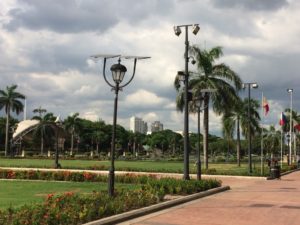August 28, 2016
I just spend the last three weeks traveling around Japan. Next week, I will be starting my fall semester at Nanzan University in Nagoya. Here is a layout of my travels:
Hakodate -> Sapporo -> Nagoya -> Kyoto -> Osaka -> Tokyo -> Fujiyashida (near Mt. Fuji) -> Kyoto -> Nagasaki -> Nagoya
There is no way I can talk about everything that I did, so I am going to give a small description of my time in each location.
Hakodate, southern tip of Hokkaido: Here, while living with host families, I participated in my summer language program, the Hokkaido International Foundation, from June until August.
Sapporo, central Hokkaido: Here, I just boarded a flight to return to Honshu, the main island of Japan.
Nagoya, south, central Honshu: Here, I met up with my father and his two friends so that we could travel together. I intended to update my visa while I was there, but it did not work out.
Kyoto, central Honshu: Here, I spent 3 days exploring the temples and shrines of Japan’s old capital. It was amazing. My Japanese abilities shone through with the amount of interaction I was able to have with locals. Because of this, a friend and I were able to go to a specialty bar and carry on a conversation with the bartender.
Osaka, in between Nagoya and Kyoto: Here, I met up with a friend and ate the city’s famous dish, takoyaki (balls of dough and octopus)
Tokyo: Here, I explored the city and soaked up the Japanese city experience from Shibuya to Shinjuku to Akihabara. I parted ways with my father and welcomed my cousin to began traveling with me from that point. Again, I met up with the friend from Kyoto and we went to another bar, where we had an even better conversation with the bartenders. This is the true fruit of my language learning.
Fujiyashida, in the middle of nowhere: Here, my cousin and I visited a beautiful, moss covered forest that is famous for the amount of suicides that occur in it. It was creepy but definitely worth the trip. We stayed in a hostel.
Kyoto: My cousin and I returned to Kyoto so that she could see the sights. We had a great time and stayed at a wonderful hostel.
Nagasaki, a port city on the southern island of Kyushu: Here, my cousin and I visited many of the Catholic sites. Because Nagasaki was the Japanese center of Catholicism, it has many beautiful and historical churches. Unfortunately, most of the Catholics of Nagasaki were killed by the atomic bomb in 1945, but much was preserved and the Catholics there persevere. It was a wonderful town to visit. I loved it.
Nagoya: I then returned to Nagoya to await the start of the fall semester. And then it is now. I am catching up on some work, updating my visa, and relaxing on the only real week of summer vacation that I get. I cannot wait to get back to school! Nanzan University sounds wonderful!
Here are some pictures of Nagasaki:


Thanks for everything! Signing out.
















